Turning to a Southern Railway class of steam locomotive, our Sole Survivor series this week looks at the London and South Western Railway’s N15 Class, later named as the “King Arthur” class under Southern Railway ownership. Once we have visited the history of the class, we will then look at the preservation life of No.777 “Sir Lamiel”.
History of the LSWR Urie Class

The development of the N15 class came from the need to provide bigger more powerful for the post World War 1 trains on the Western Section of the company’s track.
Urie used the knowledge gained from the construction and testing of his H15 class, designed and employed on Mixed Traffic duties. Limited war time materials supply delayed the start of building the class until 1918.
As well as using his own arrangements and layouts from his H15 class, Urie also retained some Drummond design features, such as cab design and Tenders, known as Drummond ‘watercarts’ tenders.
Maunsell N15s – ‘Eastleigh Arthurs’
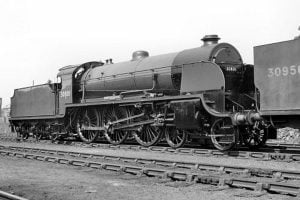
Manunsell became the first Chief Mechanical Engineer of the newly formed Southern Railway in 1923. In the first few years as CME, Manusell saw further increase in the need for express passengers. Although he was designing a new bigger class of engines, they wouldn’t be in service for stepped up 1925 Summer train services. This lead to a compromise, whereby Maunsell improved the N15 design to produce suitable locomotives for the busier trains. These engines were rebuilt from Drummond 4-6-0s, which were part of an outstanding order placed by the LSWR. Refinements such as 200psi boiler with Ross pop valves, fitting of greater surface area Maunsell superheater and re-balanced wheels. Major changes were made to the steam circuit, such as smaller cylinders, larger steam chest, larger chimney diameter with rim & capuchon and altered valve events.
Under Maunsell in the early years of the SR is when the class gained their names. These bring after characters connected to the legend of King Arthur.
North British Locomotive Company built N15s – ‘Scotch Arthurs’
More engines of the Maunsell revised design were ordered from the North British Locomotive Company based at Glasgow in 1924, due to Eastleigh operating at full capacity. The only major difference was changing the cab dimensions of these locomotives to the new Southern loading gauge, by fitting Ashford designed cabs. The original order of 20 engines soon rose to 30 increasing demand for express passenger engines. Numbered E763 – E792, all engines were delivered by September 1925.
‘Eastlaigh Arthurs’ – Batch 2
Further King Arthurs was needed, this time based on the old Eastern and Central sections where the class was chosen as the standard type by the Operation Department. This meant fitting of the Ashford cab to conform with the Southern loading gauge. May 1922 saw the order placed for 25 locomotives. After 14 were turned out, with the introduction of Maunsell’s larger express passenger ‘Lord Nelson’ class being built, the remaining 11 to be constructed were canceled.
Production Series
- Batch 1 (10) – Urie (August 1918 – November 1919)
- No.736 – 745
- Batch 2 (10) – Urie (June 1922 – March 1923)
- No.746 – 755, same as the first batch.
- Batch 3 (15) – Maunsell (May 1924 – April 1625)
- No.448 – 457, number of detailed improvements.
- Batch 4 (30) – NBLC (May 1925 – September 1925)
- No.E763- E792 ,same as batch 3 but built to new Southern loading gauge.
- Batch 5 (14) – Maunsell (March 1926 – January 1927)
- No.E793 – E806, same as batch 4.
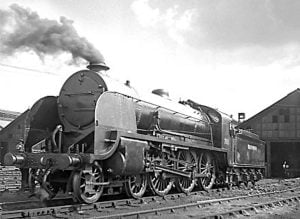
Performance in Service
‘Urie Arthurs’
The original Urie first started off on the heavy express passenger trains from Waterloo to Plymouth and cities in between. The main issue crews reported was poor steaming, and although initially blamed on crew techniques, trial runs showed it was the fault of the engines. Little weather protection proved problematic when tarpaulins used for protection restricted the view over the tender. This lead to Maunsell trialing various improvements to the class. Smoke deflectors were also tested, with a design being chosen and fitted to the from the late 1920s.
‘Eastleigh Arthurs’
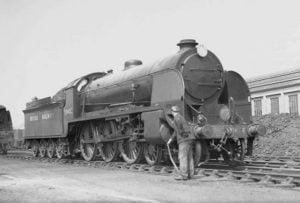
The improved Maunsell design proved successful in service. The heavy Hammerblow proved by this batch caused rough riding for footplate crews and put the axleboxes under high stress. The high-quality maintenance the class underwent countered this issue well. Another issue was the Drummond tenders, where the small inside bearing for the axles would overheat. In time the class would receive new tenders from other classes of other different designs.
The SR’s final CME, Bulleid, also tried further to improve the engines steam circuit with streamlining the internal passages. This proved successful, with some locomotives being able to achieve Lord Nelson performance. An issue arising from this was the blastpipe and chimney fitted resulted in soft exhaust blast, causing smoke to drift into the driver’s view. After new smoke deflectors were trialed, the decision was made to retain the Maunsell type ones.
‘Scotch Arthurs’
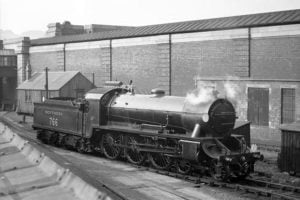
The NBLC batch proved the most problematic engines of the King Arthurs. Construction was quick which reflected in the craftsmanship. As soon as they had entered into traffic, poor steaming and hot axleboxes were reported. All 30 engines from this batch went to Eastleigh for repair work, including major boiler work. After the visit to Eastleigh, the ‘Scotch Arthurs’ ran just like the Urie and Maunsell engines.
Decline and Withdrawal
With the introduction of Maunsell’s Lord Nelson class, this ended construction of the class. Bulleid went on to produce his Pacific classes (more information on these can be found here), which handled the majority of the heavy express trains. The King Arthurs, therefore, being allocated to more secondary and mixed traffic duties across the Southern Railway. The class was used on troop trains to the coastline in World War 2.

The older Urie locomotives were first to be withdrawn, starting in 1953 when 30754 “The Green Knight” was cut up due to cracked frames. The smaller amount of standard parts also meant they were harder to maintain over later Maunsell and NBLC built members. By last Urie example was broken up in 1958. The Maunsell and NBLC members lasted until 1962, with newer Bulleid and BR Standard engines being chosen over the King Arthurs. With intention of wanting to preserve a King Arthur close to original condition, No.30777 “Sir Lamiel” was selected for preservation in late 1961.
Preservation
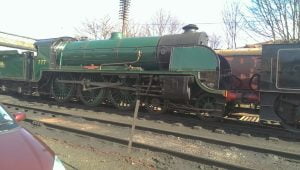
On withdrawal, 30777 “Sir Lamiel” was stored for a number of years at a few locations, before Humberside Locomotive Preservation Group took the engine up North to Hull for an overhaul in 1978. February 21th of 1982 saw Sir Lamiel steam for the first time in two decades. On its first ticket, 777 mostly operated on the mainline hauling a number of tours until withdrawn for the second overhaul, finished in 1989. Now apart of the National Collection of the National Railway Museum, the 5305 Locomotive Association operate and maintain 777 from their base at the Great Central Railway. Here, Sir Lamiel usually spends most the year on the mainline and returns to the GCR in the winter for maintaining, also hauling trains along the line.
2015 saw 777 Sir Lamiel withdrawn from service to undergo an overhaul to allow the engine to return to the mainline again.
For further information on No.777 “Sir Lamiel”, please visit the 5305 Locomotive Association’s website here
We hope you enjoyed this week’s Solo Survivor looking at the N15 ‘King Arthur’ class. Next week we will bring you a Class Information covering a Great Western Railway designed locomotive class.
- Visit the RailAdvent news homepage
For the latest railway news - Visit the RailAdvent Shop
For railway related goodies! - Visit LocoStop – Our New Social Network
Come and share your photo’s and video’s, join the discussion.
Find out what others are sharing


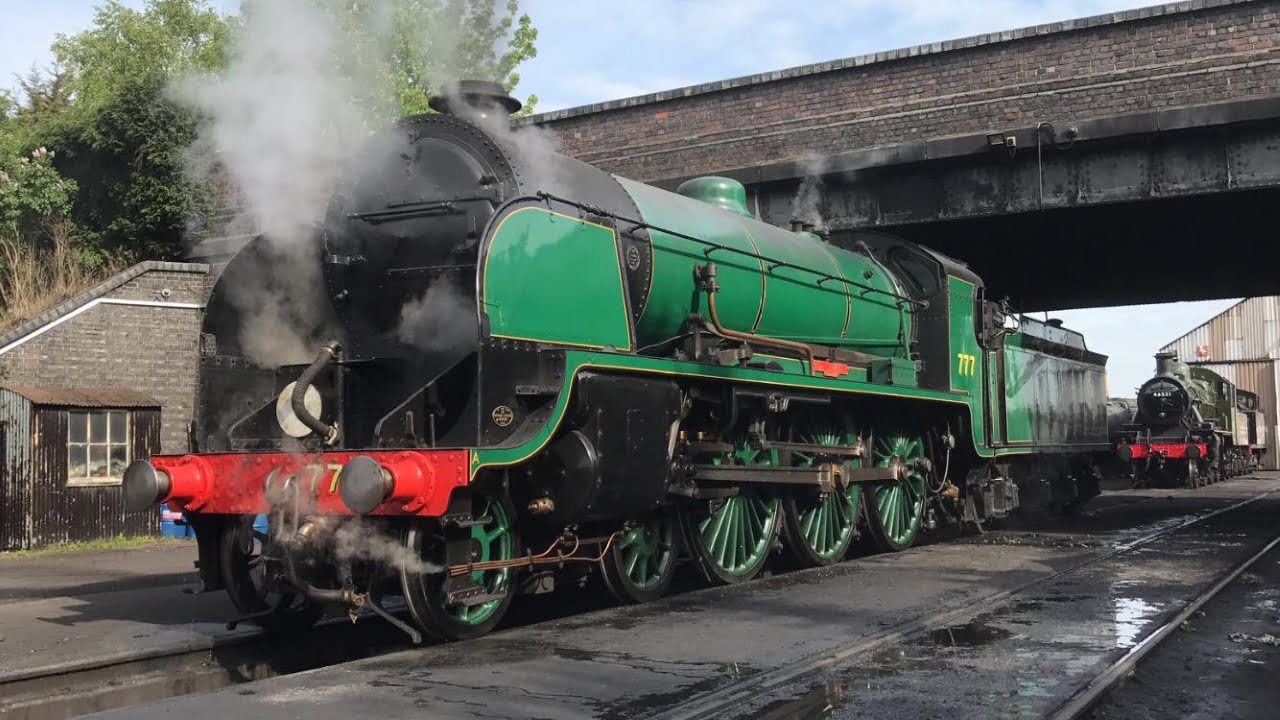



Responses
The N15s were also Urie’s attempt to address issues stemming from the disappointing performance of Drummond’s classes of 4-6-0 built in the years before WW1. Drummond had produced some successful 4-4-0s, principally the deceptively slender-looking T9s, descendants of his first 4-4-0s designed for the North British Railway in the late 1870s. But his ventures into 4-6-0 territory later in his career were, for want of a better word, flops. Of these, his final 4-6-0 design, the T14s, were the least unsuccessful. Following Drummond’s tragic death from scalding on a locomotive footplate, Urie was determined to produce locomotives with adequate dimensions to handle the heavy traffic offering, but as far as possible free of the problems which had plagued his predecessor’s 4-6-0s. This entailed the use of strong frames, adequate bearing-surfaces and grates and – above all – simplicity. His N15s, H15s and S15s were as simple as could be, contrasting markedly with the complexities of Drummond’s 4-6-0s – such as for example the use of different types of valve gear outside and between the frames. Urie’s engines had two cylinders actuated by Walschaert gear. He had no use for multi-cylinder layouts. Simple they might have been – but following Maunsell’s modifications they were among the most successful British 4-6-0s with some remarkable performances to their credit.
[…] We hope you have enjoyed this week’s Class Information. Already covered in our Sole Survivor series is the LSWR/SR N15 “King Arthur”, the Express Passenger version of the S15s. To find out more about this class and the last class member left, click here. […]
[…] As well as using his own arrangements and layouts from his H15 class, Urie also retained some Drummond design features, such as cab design and Tenders, known as Drummond ‘watercarts’ tenders. LSWR/SR Urie N15 […]